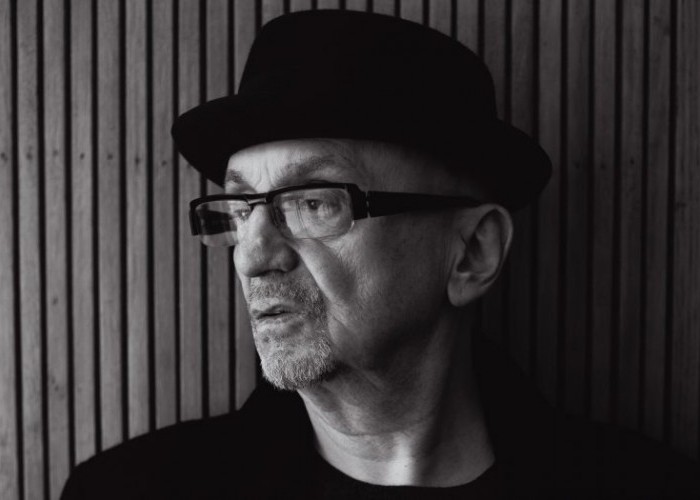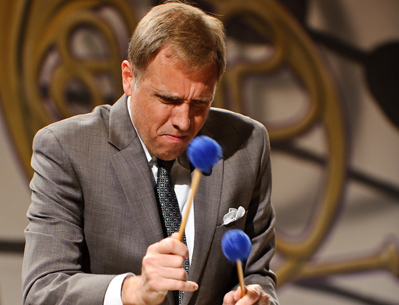Dec 9, 2025 12:28 PM
In Memoriam: Gordon Goodwin, 1954–2025
Gordon Goodwin, an award-winning saxophonist, pianist, bandleader, composer and arranger, died Dec. 8 in Los Angeles.…

The late trumpeter Tomasz Stańko would have turned 80 this year.
(Photo: Courtesy of Roulette)“Remembering Tomasz Stańko,” a free all-star memorial concert for the late Polish trumpeter, composer and bandleader, will be held at Brooklyn’s Roulette on Sept. 18.
In what would have been his 80th birthday year, Stańko’s life and art will be celebrated in New York City — his spiritual home away from home — by 14 key peers and associates, including musicians who worked closest with the trumpeter in his last, highly productive decades and others who collaborated with him on special latter-day projects..
One of Europe’s most original and beloved jazz musicians, Stańko was born on July 11, 1942, in Rzeszów, Poland, and he passed away in Warsaw on July 29, 2018. In many ways, his life traced the course of modern jazz in Europe, beginning with his tenure in the band of Polish composer-pianist Krzysztof Komeda. Those formative years included recording on Komeda’s timeless album Astigmatic, released in 1965 and soon recognized as representing a sea change for European jazz. Starting in 1975, Stańko began his association as a leader with the iconic German art-house label ECM Records that would produce a dozen masterful albums up to his final release, December Avenue, in 2017. That recording featured his New York Quartet, a band that reflected the trumpeter’s deep affection for its namesake town and the inspiration he found in New York’s living history of jazz.
“Remembering Tomasz Stańko” will include two illustrious soloists on trumpet: Wadada Leo Smith and Ambrose Akinmusire. The night’s revolving cast of musicians will be anchored by the rhythm sections from both Stańko’s New York and Polish quartets: pianist David Virelles, bassist Reuben Rogers and drummer Gerald Cleaver, from the former; and, from the latter, pianist Marcin Wasilewski, bassist Sławomir Kurkiewicz and drummer Michał Miśkiewicz. Stańko discovered the Poles when they were just teenagers; in addition to working as an established trio, they now play with saxophonist Joe Lovano, who will also join them for this event. Guitarist Jakob Bro, who played on Stańko’s Dark Eyes album, will be on hand, as will saxophonist Chris Potter and pianist Craig Taborn, who were part of a special band that Stańko put together for a concert at New York’s Jazz Standard in 2011. Saxophonist Ravi Coltrane and bassist Dezron Douglas will also perform. They, along with Virelles, were featured in a quintet that recorded POLIN, a suite that Stańko composed for an exhibition at the POLIN Museum of the History of Polish Jews.
Stańko’s intensely lyrical sound and sensibility were easily identifiable, with his tone of Slavic melancholy, his expressive peals and smears, and the noir-ish atmospheres that he liked to conjure in his music. Although he was, above all, a darkly melodic improviser, the trumpeter was as at home playing in Cecil Taylor’s Big Band as he was performing with the likes of Dave Holland, John Surman, Lee Konitz, Gary Peacock, Edward Vesala or Bobo Stenson.
Having grown up in the USSR, Stańko relied on the Voice of America radio network to connect him to the American jazz scene, and the sounds he heard fostered his dream to someday make it to New York and experience that scene for himself. It was almost exactly 20 years ago that Stańko finally made it to the U.S. for his first American tour. He was so inspired that he kept an apartment in the city for the last decade of his life, so that he could split his time between the Big Apple and Warsaw. Although an innovator in modern European improvisation, Stańko always maintained a strong sense of jazz history.
“With Krzysztof Komeda, we would mostly listen to modal music, like Miles Davies and John Coltrane,” he recalled. “This was my inspiration. Ornette Coleman was important, too, of course, as an example of a certain attitude toward art – that of searching and rebellion.” Living part-time in New York also kept Stańko in touch with the ongoing vitality of jazz. “Originally, I just wanted to enjoy New York, the city where so much great jazz history has been made,” he said, but it wasn’t long before the trumpeter was interacting with local players and finding “the fantastic cats” he would work with so fruitfully in his New York Quartet, among other ventures.
“Remembering Tomasz Stańko” is organized by the Tomasz Stańko Foundation thanks to funding from Adam Mickiewicz Institute (culture.pl) and the Kosciuszko Foundation, as well as the support of the Polish Cultural Institute in New York. For more information, click here. DB

Goodwin was one of the most acclaimed, successful and influential jazz musicians of his generation.
Dec 9, 2025 12:28 PM
Gordon Goodwin, an award-winning saxophonist, pianist, bandleader, composer and arranger, died Dec. 8 in Los Angeles.…

Belá Fleck during an interview with Fredrika Whitfield on CNN.
Jan 13, 2026 2:09 PM
The fallout from the renaming of the John F. Kennedy Center for the Performing Arts to include President Donald…

Flea has returned to his first instrument — the trumpet — and assembled a dream band of jazz musicians to record a new album.
Dec 2, 2025 2:01 AM
After a nearly five-decade career as one of his generation’s defining rock bassists, Flea has returned to his first…

Dec 11, 2025 11:00 AM
DownBeat presents a complete list of the 4-, 4½- and 5-star albums from 2025 in one convenient package. It’s a great…

Vibraphonist Chuck Redd found himself in the midst of a political firestorm after canceling his gig Dec. 24 at the newly renamed Trump Kennedy Center.
Jan 6, 2026 2:32 AM
The Board of Trustees at Washington, D.C.’s Kennedy Center for the Performing Arts voted on Dec. 18 to rename the…